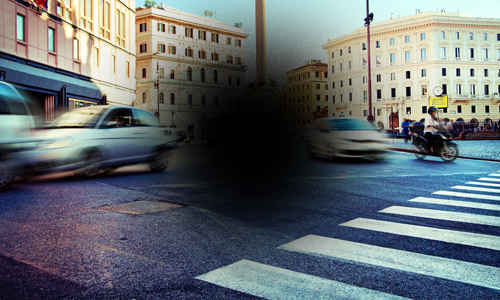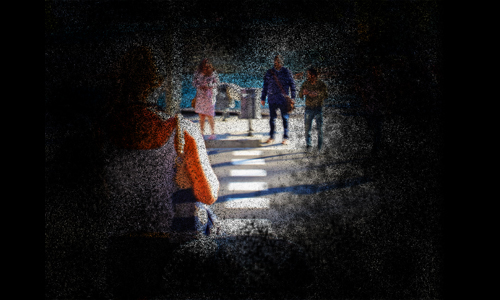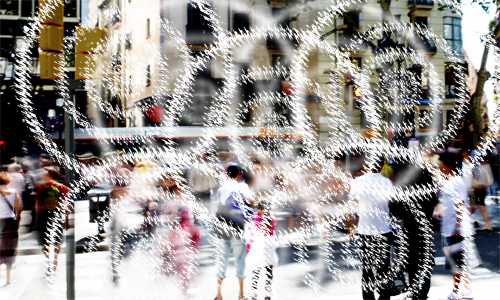EYECAN – Take Another Hard Look
When EYECAN contacted us to run a road safety campaign for the visually impaired, we hadn’t realised the kinds of issues her clients faced when getting around the Island. We were invited to one of their meetings so they could give us some perspective and we filled up two sheets of A4 with road safety issues they are experiencing, we actually had to stop them giving us material as we realised we wouldn’t be able to cover everything.
We were also surprised to find out that more than 2000 islanders are affected by this problem and face daily difficulties when using our roads. Many of their anecdotes were quite shocking.

It’s important to realise that many people with sight loss will not necessarily be obvious to us. Some people may have a guide dog or use a white cane, but for many other people sight loss is an invisible disability. Learning to live with impaired sight frequently involves a long emotional journey. It may take a very long time for a person to accept their sight loss and it commonly takes years before people feel comfortable enough to draw attention to their impaired sight by using a white cane. However demonstrating common courtesy to all pedestrians will make things easier for everyone.
The ‘focus’ of our campaign is aimed mainly at car drivers, but to be honest we need to talk to every road user as this very vulnerable group of road users need help from all of us. We need to keep an ‘EYE’ out for them and very much fits in with our generic campaign that we have been running for three years ‘Let’s look out for each other’.
Types of Sight Loss
There are many types of sight loss but we should like to raise awareness of three kinds in particular.

Central Vision Loss:
This is the most common type of sight loss in which people are unable to see what is directly in front of them, though they can still see what is to the sides.
If you are walking toward someone who has this type of vision loss, the likelihood is that they won’t see you until the last moment. People with this type of sight loss won’t be able to see obstacles in their path until the last moment either.

Tunnel Vision:
People with this type of sight loss may see only what is straight in front of them and might not be able to see what is to the sides, above and below.
They will also have very poor night vision. People with tunnel vision probably won’t see anything approaching from the sides, and will have particularly poor vision at night or in poor light conditions.


Blurred or Patchy Vision:
Individuals with this type of sight loss experience a general lack of clarity in their vision, making everything appear unfocused or fragmented. Unlike clear peripheral or central vision, those with blurred or patchy vision face challenges in identifying details both near and far. This can make navigating environments tricky, as the world appears uniformly indistinct, lacking sharp edges or definite shapes. It’s akin to looking through a frosted or smeared window where specific objects blend into the background, and colours and faces are difficult to distinguish.

What can YOU do to help?
Drivers:
Please take more care when approaching all pedestrian areas and junctions. The person trying to cross the road may be sight impaired and will not easily to see you. Also electric vehicles, which are very quiet, may not be noticed by people with combined sight and hearing loss.
Pedal Bike Riders:
You probably do know you shouldn’t be cycling on pavements and precincts unless signed you can do so and that most ‘No Entry’ signs mean ‘No Entry’ for cyclists. Even when you are cycling legally, please bear in mind that some pedestrians will not see or hear you coming. Speeding around, or cutting across, people who are sight impaired, some of whom may also have hearing loss, may cause them (or you if they lash out because they are startled) to have an injury, and may badly affect their confidence.
Pedestrians:
Please don’t congest the white lines along the centre of King Street as these are in place to assist people with sight loss. When a person doesn’t make way for you please don’t assume they are being rude. They might not have seen you.
Businesses:
Please understand that when sandwich boards are frequently placed in different positions they may cause collisions to people with impaired sight who do not expect them to be in their path. Also any scaffolding around businesses should be brightly marked to make it noticeable and prevent accidents.
For further information go to www.eyecan.je

